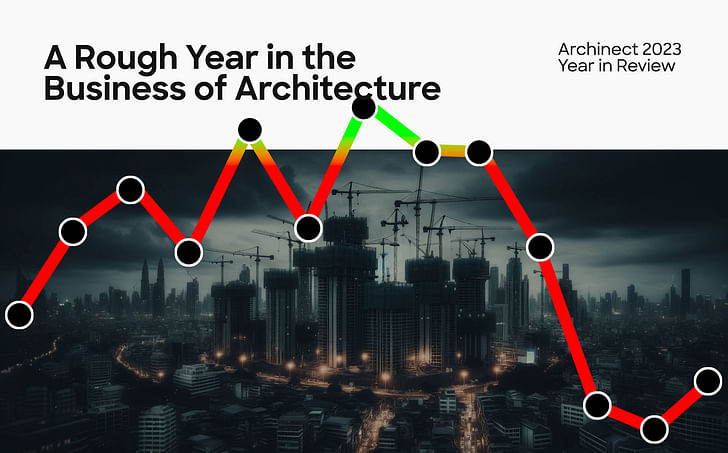

We want to hear from our community: How are you feeling about the economic outlook of your firm and sector? How easy or difficult are you finding it to secure projects? What is your employment outlook? What are you hearing from clients?
Fill out our anonymous survey below.
While the United States avoided a recession in 2023, the past twelve months have seen the U.S. economy flash warning signs that may signal a future downturn. The past three financial quarters have seen GDP steadily decline, sitting at +1.6% in the first quarter of 2024, while a weakening job market and a slowdown in manufacturing activity have led to economists warning that the U.S. may be “sleepwalking” into a recession.
"We've seen a downshift in the data flow that is starting to indicate that the downturn in the economy may not be as far away as many believe,” David Rosenberg warned last week in comments carried by Business Insider. Meanwhile, Citi Chief U.S. Economist Andrew Hollenhorst told CNBC that he predicted a recession by the middle of 2024.

Meanwhile, while the wider economy has not dipped into a recession, there is data to suggest that the architecture industry has been hit harder than others. At the end of 2023, we analyzed economic reporting from throughout the year, which saw a decline in metrics on the AIA’s Architecture Billings Index (ABI) and Dodge Momentum Index (DMI), as well as volatile patterns in job openings across the country, as confirmed with activity on Archinect Jobs, the leading job board for the U.S. architecture industry.
As we approach the midpoint of 2024, those same metrics have shown little signs of recovery. Employment activity in the architecture profession remains low, while the March edition of the AIA ABI saw the index’s lowest score since December 2020 and marked over one year of consistent negative scores for the billings index.
Whether or not the current economic climate meets the definition of a ‘recession,’ the architecture industry is demonstrably not in good economic health. Several factors have been cited by economists as contributing to the slowdown, with higher interest rates, inflated construction material costs, and a weakening labor market as the leading candidates.

With the theories for these conditions shared by institutions like the AIA, we want to hear from our community about your own experiences.
How are you feeling about the economic outlook of your firm and sector? How robust is your job pipeline or job prospects? How easy or difficult is it to attract new projects? What are your employment plans? What are you hearing from clients? How prepared do you feel for a downturn in design and construction activity? What advice do you have for your peers?
We invite you to fill out our anonymous survey below in order to assess the profession’s current economic condition. Once we receive a sufficient response from a cross-section of the community, we will present our findings and analysis.
Niall Patrick Walsh is an architect and journalist, living in Belfast, Ireland. He writes feature articles for Archinect and leads the Archinect In-Depth series. He is also a licensed architect in the UK and Ireland, having previously worked at BDP, one of the largest design + ...
No Comments
Block this user
Are you sure you want to block this user and hide all related comments throughout the site?
Archinect
This is your first comment on Archinect. Your comment will be visible once approved.